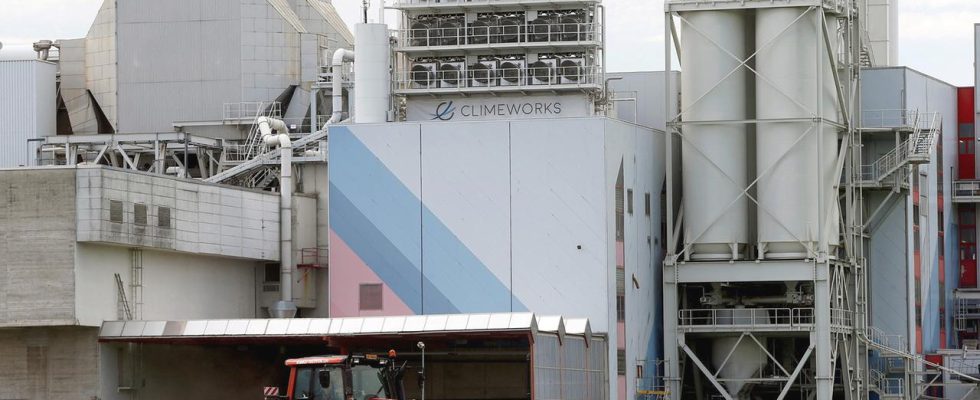Germany wants to be climate neutral by 2045. To achieve this, CO2 would have to be removed from the atmosphere. There are a number of methods for this: planting trees, fertilizing oceans – or simply vacuuming them up.
A specialist conference, the CDR Dialogue 2023, is currently taking place at the German Museum in Munich. In this dialogue, researchers and invited participants from politics and business want to discuss which methods of CO2 removal make sense for Germany and how they can be applied as quickly as possible can come.
CO2 extraction briefly explained
Germany has decided to be climate neutral by 2045. CO2 emissions and savings must then be balanced. But because we will continue to emit greenhouse gases through agriculture, aviation, cement production and other areas, climate neutrality can only be achieved if CO2 is removed from the atmosphere again. This is called CO2 removal or in English: Carbon Dioxide Removal (CDR).
This is possible and is already being practiced, for example through reforestation: trees absorb CO2 from the air and convert it in photosynthesis, among other things, in carbon and oxygen. The carbon is then bound in the wood until the wood burns or rots and emits CO2 again. As long as forests grow, they are a CO2 sink: they offset part of the greenhouse gas emissions.
Various CDR methods
Setting up huge suction systems that filter carbon dioxide from the air is another method of CO2 removal. However, it only really makes sense when the large amount of energy required for it can be produced in a climate-neutral manner using renewable energies.
Scientists are currently researching many other methods of removing carbon dioxide from the atmosphere. An example: Some minerals absorb CO2. If they are spread on fields as rock dust, they not only bind the greenhouse gas in the long term, but also increase the quality of the soil. A CDR process that could be interesting for agriculture. However, the minerals required for this would have to be mined industrially in quarries on a large scale: this may make sense from a climatic point of view – but it is ecologically questionable.
Potential, but also costs or risks
CO2 removal is not free. With a biomass plant, for example, you could generate energy without needing fossil fuels such as oil, coal or gas. The CO2 produced when the biomass is burned could be split off as soon as it is produced.
Quite apart from the question of where the split-off CO2 will then be safely stored in the long term, every biomass plant also brings with it another potential for conflict: the cultivation of biomass – regardless of whether it is rapeseed, corn or elephant grass – requires space. A lot of space if you really want to generate noticeably negative emissions.
Like reforestation projects, biomass competes with the protection of biodiversity or food production in agriculture.
Research projects for CO2 removal
“It’s no longer a question of whether we want to practice carbon dioxide removal – we have committed ourselves to this with the goal of greenhouse gas neutrality. Now it is important to clarify how we design CO2 removal,” explains Julia Pongratz, professor in the Department of Geography the Ludwig Maximilian University of Munich in an interview with Bavarian Radio.
She is the spokesperson for the large research program CDRterra, in which more than 100 researchers have been investigating various land-based methods for CO2 removal since 2021 on behalf of the Federal Ministry of Education and Research. At the same time, CDRmare is researching CDR processes that can remove CO2 from the atmosphere using oceans.
The right mix does it
Currently, CDR in Germany consists almost exclusively of reforestation projects, explained Pongratz in an interview with br. But it’s not just the amount of land required that worries scientists. Climate change and persistent periods of drought have long since ensured that carbon dioxide is no longer safely stored in forests: every forest fire destroys decades of forest growth in a short space of time.
The aim of the current CDR Dialogue 2023 is to find the right mix of different processes for CO2 removal together with politics and business. “We need a portfolio of different CDR methods – because each has limited potential and its own challenges, such as conflicting goals with food production or risks regarding their permanence,” explains Pongratz.
Society as a whole must decide
And because CDR entails high costs – ecological, social and financial – it is important to the researchers that all areas pull together: “In order for the widespread use of CDR to be socially, economically and ecologically compatible, everyone involved must come together – Politics, business, research and education,” says the call for the CDR Dialogue 2023.
Pongratz makes it clear that there is no point in despairing: “We have a serious problem that we have to solve. We have a great responsibility. My generation also contributed substantially to the fact that there are now so many greenhouse gases in the atmosphere. And we now have to help the next generation I want to give the generation the tools to solve it. And that’s what drives me. That makes me happy every day that I’m able to be involved.”

